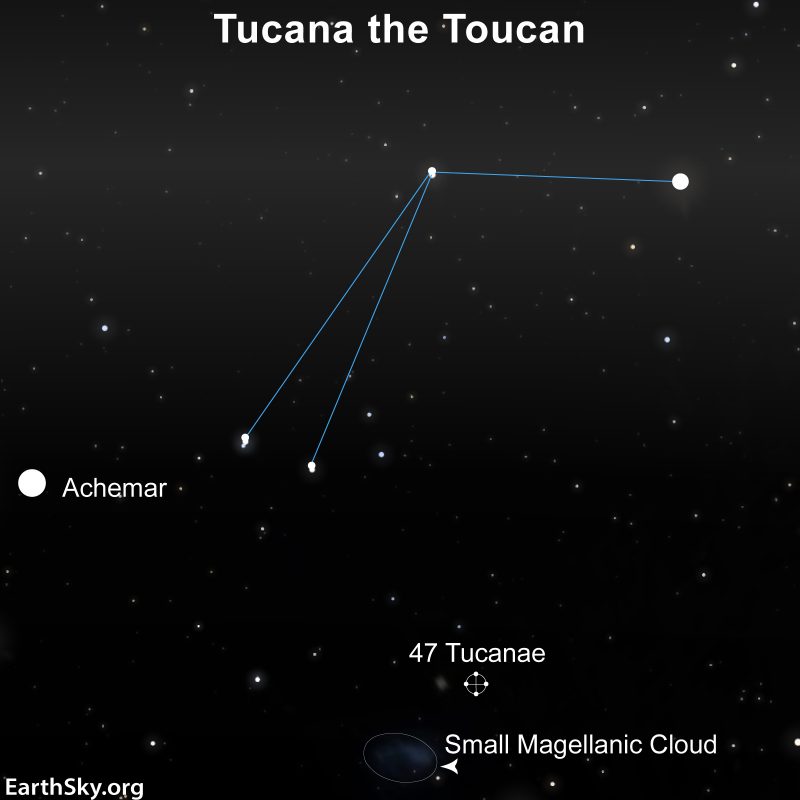
Tucana the Toucan, deep in southern skies
The constellation Tucana the Toucan is visible year round from Earth’s Southern Hemisphere. That’s because it’s near the south celestial pole, the point in the sky around which all southern stars revolve. So those of us in the Northern Hemisphere would have to travel southward on Earth’s globe to see Tucana. And, once we got there, we’d find that the stars of this constellation aren’t particularly bright or remarkable. Yet many of us know Tucana by name. Why?
It’s because this constellation is famous for being home to the Small Magellanic Cloud, the fuzzy patch in the sky that represents one of two relatively large dwarf galaxies orbiting our Milky Way. Plus southern stargazers know that a large globular star cluster – 47 Tucanae, visible to the unaided eye – is also located within the boundaries of Tucana. In fact, this constellation’s stars are harder to pick out than the globular cluster and galaxy that anchor its southern edge.
The 2022 lunar calendars are here. Order yours before they’re gone!
Stars of Tucana
The brightest star in Tucana is Alpha Tucanae, a magnitude 2.87 star that lies almost 200 light-years from Earth.
On the opposite side of the constellation from Alpha is Beta Tucanae, a star system containing six stars loosely bound together. Beta 1 is the brightest and shines at magnitude 4.36. Beta 2 shines at magnitude 4.53, and Beta 3 shines at 5.07. The whole Beta Tucanae system is an average of 140 light-years from Earth.
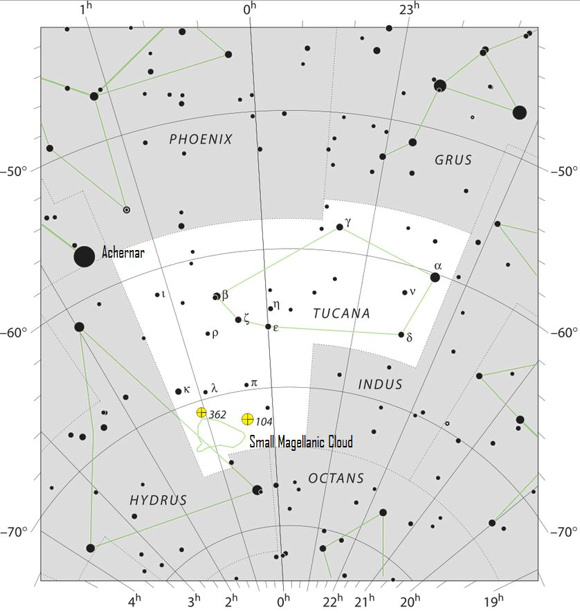
Small Magellanic Cloud
Despite its great distance of 200,000 light-years, the Small Magellanic Cloud is one of the closest galaxies to Earth. You can see it without optical aid as a misty, cloudy patch from dark-sky locations. The Small Magellanic Cloud is an irregular galaxy but has a central bar as part of its structure, making it look like a disturbed former spiral. It’s the smaller of the two satellite galaxies in the Southern Hemisphere skies, with the larger being the aptly named Large Magellanic Cloud.
The Small Magellanic Cloud has many clusters and nebulae within its expanse. An excellent target for a telescope, clusters stream through its length and out one tail. The Small Magellanic Cloud’s nearby kin, the Large Magellanic Cloud, lies in the constellations Mensa and Dorado. Both of these nearby galaxies are being sucked inward by the Milky Way Galaxy and will eventually be absorbed by it.
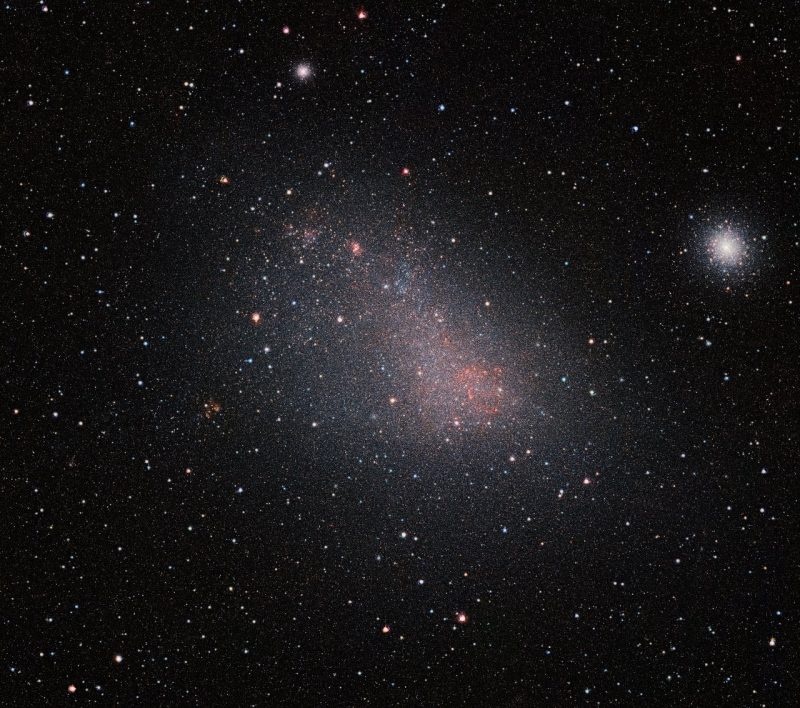
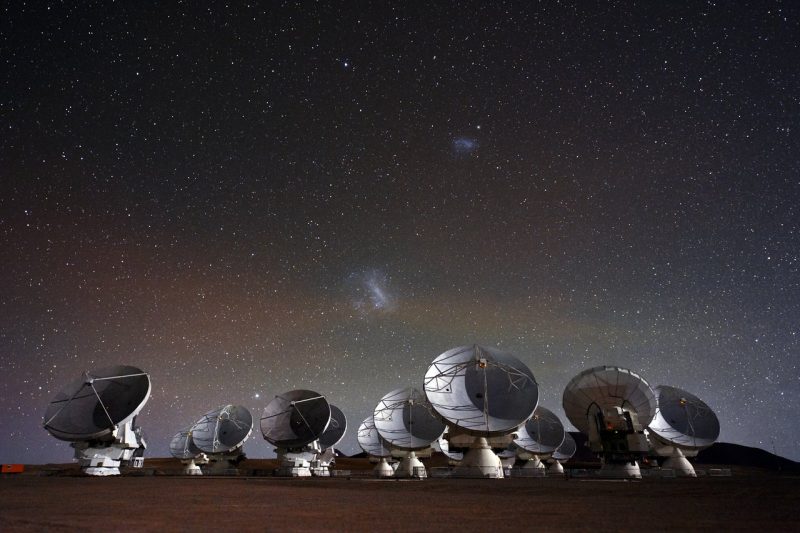
47 Tucanae
The globular cluster 47 Tucanae also bears the catalog name NGC 104. It shines bright at magnitude 4.0 and is easily visible with the unaided eye. In excellent seeing conditions, it appears as large as the full moon. It’s the second brightest globular cluster of the Milky Way and contains millions of stars. Use binoculars or a telescope to resolve thousands of stars in the cluster.
47 Tucanae lies 16,700 light-years away. 47 Tucanae and the Small Magellanic Cloud may look close together, but that is only a line-of-sight coincidence. The Small Magellanic Cloud is 15 times farther away.
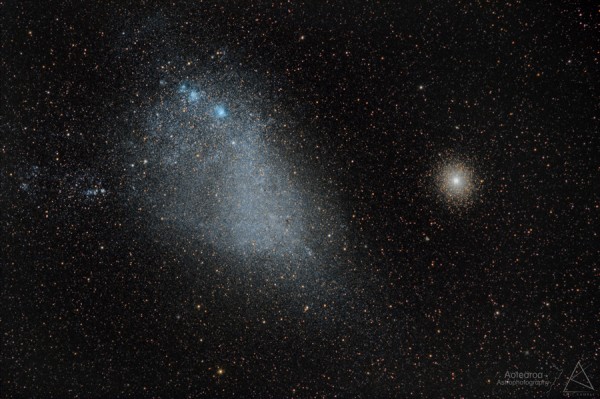
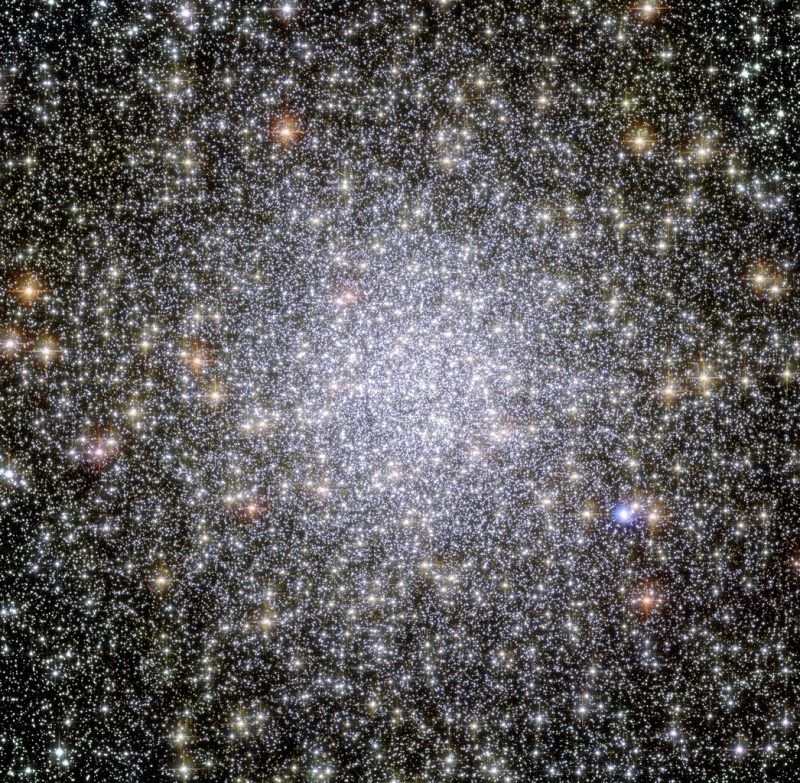
Bonus globular cluster
Want a bonus observing target? On the opposite edge of the Small Magellanic Cloud’s curving shape from 47 Tucanae is NGC 362, another bright globular cluster. NGC 362 is a bit dimmer than 47 Tucanae, at magnitude 6.6, but still a good target in binoculars or small telescopes.
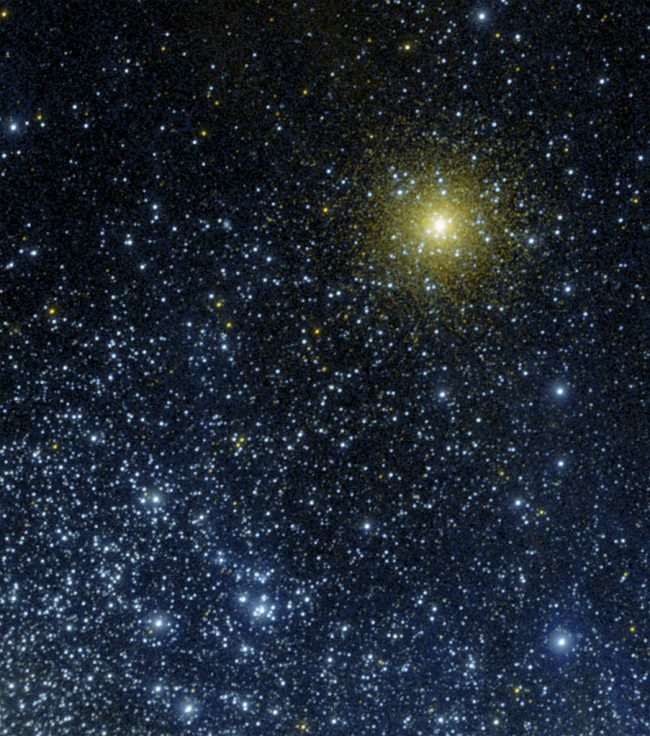
The Hubble Deep Field South
The Hubble Space Telescope took a series of famous images called “deep fields”. In these images, the space telescope stared at what mostly looks like a blank area of sky for a long period of time, allowing the faint background objects to come to light. One of these images, the Hubble Deep Field South, came from a region of Tucana.
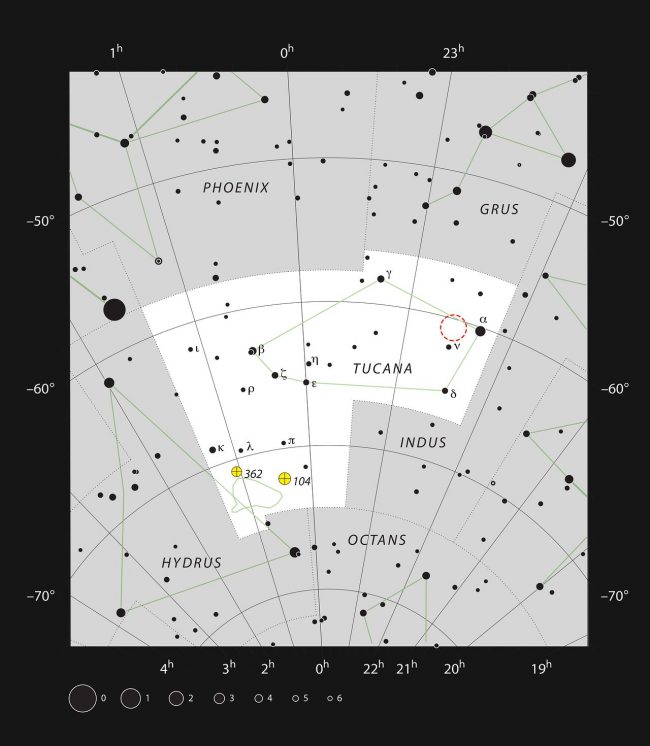
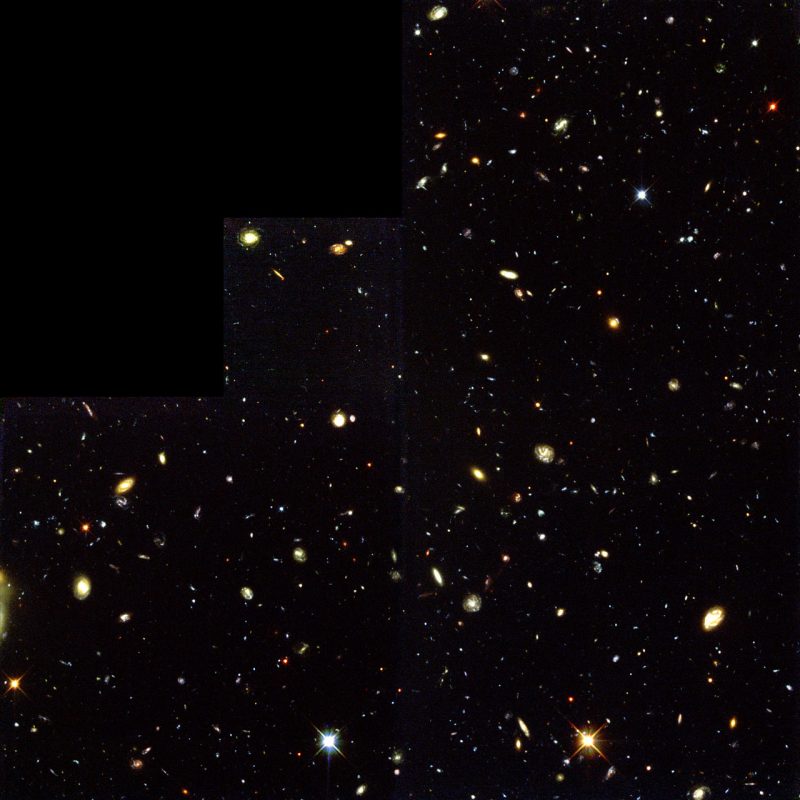
Bottom line: Tucana the Toucan is a constellation in the Southern Hemisphere that’s a cinch to spot. Just look for our little satellite galaxy, the Small Magellanic Cloud. Two easy-to-observe globular clusters also reside here.
The post Tucana the Toucan is home to the Small Magellanic Cloud first appeared on EarthSky.
0 Commentaires